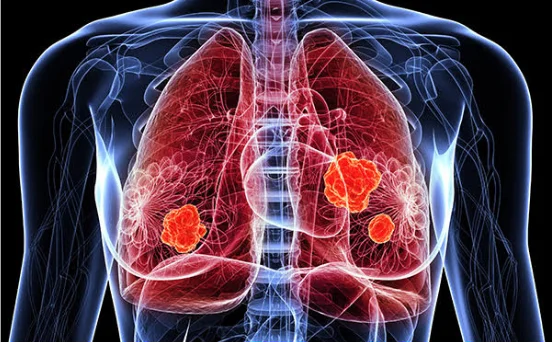An Thorcotomy is an important surgical procedure that involves cutting an incision through the chest wall in order to get access into the organs of the thoracic system, most typically the esophagus, lungs and heart, as well as important blood vessels. It is usually utilized to diagnose or treat severe conditions like lung cancer, chest trauma, esophageal cancer or lung infections. Understanding of treatment for thoracotomy surgery.
A surgical procedure that is invasive is performed, the process of thoracotomy includes preparation prior to the operation as well as the surgical procedure itself along with post-operative treatment and the long-term recovery. Knowing the phases of each is vital for caregivers, patients, and medical professionals who are involved in thoracic medical care.
Why Is Thoracotomy Performed?
Thorcotomy procedures are typically suggested in situations when less invasive procedures such as Thoracoscopy and VATS (Video-Assisted Thoracoscopic Surgery) are not possible. A few common indications include:
-
The removal of lung cancer (lobectomy or pneumonectomy)
-
Removal of tumors on the chest
-
Repairing traumatized injuries to the chest
-
Infection drainage (empyema)
-
Esophageal surgery
-
Aortic or heart surgery
Pre-operative Preparation
Before having the Thoracotomy the patient need to undergo a thorough examination including:
-
Medical history and physical exam
-
imaging tests like chest X-rays, CT scans, or MRIs
-
Function tests for the lungs to determine lung capacity
-
Cardiac examination particularly in older patients
-
The blood tests are conducted to determine if there’s an clotting disorder or infection
Doctors may advise patients to quit smoking cigarettes, avoid blood thinners, and be active prior to the procedure. Support with nutrition may also be offered to ensure that patients are in top health to recover.
The Thoracotomy Procedure
- Anesthesia and Positioning:- The patient is put beneath general anesthesia and then placed on their side, allowing an access point to their chest. The position chosen is determined by the area that the illness is occurring.
- Incision:- An incision of a large size (usually between 6 and 10-inches) is created in between ribs. At times, one or more ribs can be removed in order to provide more access to the lungs or the chest cavity.
- Surgical Intervention:- When in the chest cavity surgeons will perform the procedure, like removal of a lung, draining fluid, or abscesses, and repairing damaged tissues.
- Chest Tube Placement:- Following the procedure after the procedure, one or more the chest tubes are inserted in order to remove fluid and air and allow your lungs to develop as they heal.
- Closure:- The incision is then closed with stitches or staples and the patient is transferred to the room for recovery for post-operative observation.
Post-operative Treatment for Thoracotomy Surgery
Thoracotomy treatment doesn’t stop after surgery, but continues to be intensively treated following surgery. The post-operative phase is crucial and includes the management of pain as well as respiratory therapy. infection prevention.
Pain Management
Thoracotomy can cause significant pain because of the huge incision and manipulation of the ribs. Treatment options for pain include:
-
Epidural analgesia
-
Intercostal nerve blockages
-
Pain relief medications
Respiratory Support
Inspirometry exercises for breathing, incentives and chest physiotherapy is started earlier to stop respiratory illness and atlectasis (lung collapsing).
Mobility
Patients are advised to begin walking within 1-2 days following surgery in order to prevent blood clots and to improve lung function.
Wound Care
Care for the incision is essential to avoid infection at the surgical site. Patients are instructed on cleanliness, dressing changes and indicators of infection to look out for.
Monitoring
Post-operative care can include:
-
Regular chest X-rays
-
Blood work
-
Checking for any signs of bleeding or infection, or air leaks
Complications and Risk Management
Although most treatment for thoracotomy surgery are effective there are risks. The most frequent complications are:
-
Infection
-
Bleeding
-
Air leakage that lasts for a long time
-
Pneumonia
-
Pain chronic (Post-thoracotomy the pain syndrome)
To reduce risks:
-
Make sure you follow the post-op directions
-
Make follow-up appointment
-
Stop smoking
-
A balanced diet is recommended to aid healing
Minimally Invasive Alternatives
In recent times, VATS (Video-Assisted Thoracic Surgery) has become a option for a variety of surgery procedures for the thorax. VATS is a procedure that requires fewer incisions, a faster recovery and less discomfort. However, not all situations can be treated with minimally invasive procedures. Your surgeon will choose the most appropriate approach depending on the diagnosis you have made.
Conclusion
Treatment for thoracotomy surgery is a multi-faceted process that begins with surgical planning, and is followed by intensive post-operative care and rehabilitation. It requires collaboration among surgeons, anesthesiologists physical therapists, nurses, and the patient.
The selection of a skilled surgical team, recognizing the path to recovery and taking an active role in the post-operative process can greatly improve the outcomes. With the proper support and adhering to the medical guidelines, many patients return to their normal lives, usually with better overall health and improved quality of life.























